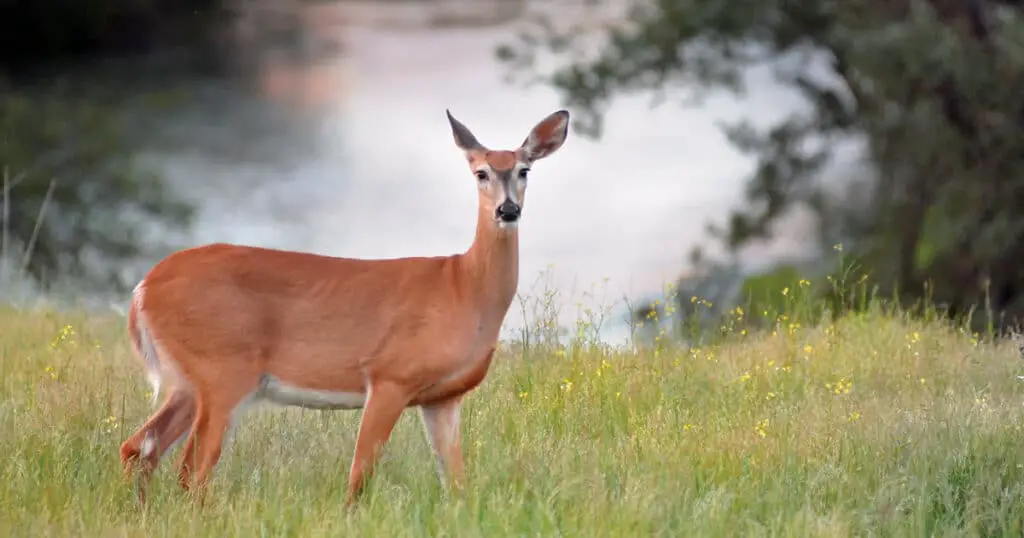There are several different names for each kind of deer – males, babies, and females. Where you are located, along with the species of deer can change how you refer to each gender and age. But what is a female deer called, and how do you know you’re using the correct female deer name?
Most of us would probably say that a female is called a doe. But just like its male counterpart, a female deer goes by several names.
Let’s find out what they are, and then we’ll go on a deeper dive to explain which name to use when.
3 Most Common Female Deer Names
Table of Contents
ToggleA female deer is called one of three names: Doe, Hind, or Cow. The proper name for a female deer varies based on the type of deer, its size, and (sometimes) its location in the world.
- Doe is the most common name used for adult female deer. This term is used for smaller deer species, and it’s a term that’s also used for females of other species (rabbits and kangaroos are examples).
- Hind is the name used for females of some larger species, and is typically the counterpart of the word “Stag” which is used for male Red and Sika Deer (among other species).
- Cow is the name of females of large deer species such as the Moose, Elk (Wapiti), and Caribou or Reindeer. The male counterpart of a female called a cow is a bull.
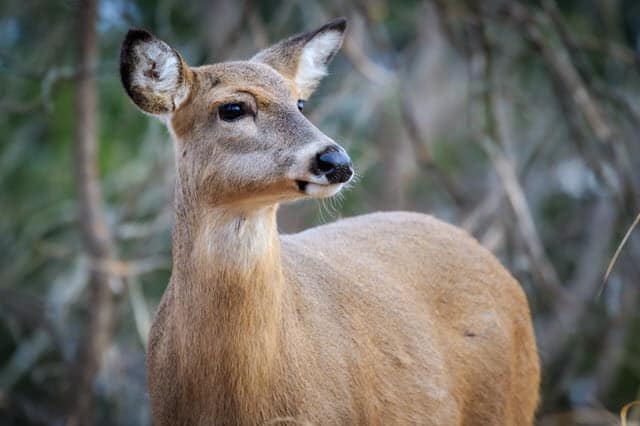
Doe vs Hind vs Cow – What’s the Difference?
Whether it’s called a doe, hind, or cow, there are some subtle differences between different types of female deer which dictate what they are called.
The differences between each name are mostly tied to the size of the deer and the deer species in general.
About Female Deer That Are Called a Doe
Doe is the most widely used term for an adult female cervid, regardless of its age. However, this term typically refers to medium-sized or smaller deer species.
The term doe is often also used in referring to the feminine gender of other animals, such as rabbits, kangaroos, giraffes, and antelopes. Some examples of deer species, where the females are called does are the European Roe Deer, Fallow Deer, Muntjac, and Chinese Water Deer.
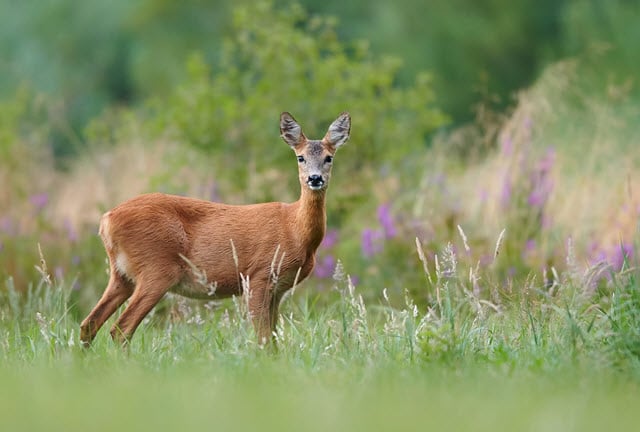
Female Roe Deer Characteristics
The roe deer species is common in Scotland and England. A few may also be found in Wales. Females of this species typically deliver twins.
Roe deer have an extremely short tail to where they look like have no tail at all. One feature that distinguishes a doe from a male roe deer is that the latter has an upside-down and heart-shaped white patch on its rump. Bucks have an oval-shaped white patch.
Female Fallow Deer Characteristics
Fallow deer are a medium-sized deer species widespread in England, Wales, Scotland, and Northern Ireland. You’ll find them in parks across Europe as well as in East Asia.
Fallow does can grow up to three feet at the shoulder and weigh as much as a hundred pounds.
Female Muntjac Deer Characteristics
The muntjac deer is the oldest-known deer species. They are mainly found in South East Asia before they were brought to England in Bedfordshire in the early 1900s.
Muntjac does, like females of other deer species, have tufts of hair instead of antlers. Like their male counterparts, female muntjac have tusks, which extend from their upper canines.
Female Chinese Water Deer Characteristics
Both male and females of this species don’t have antlers but have tusks or fangs.
The tusks of a doe are typically thinner than a buck’s, measuring about one-half to one centimeter, whereas the male’s tusks are pronounced and resemble fangs.
Learn More About Chinese Water Deer
About Female Deer That Are Called Hind
A hind is the name given to female deer which are the counterpart of a stag. Most often, this word is used to refer to a female Red Deer or a female Sika Deer.
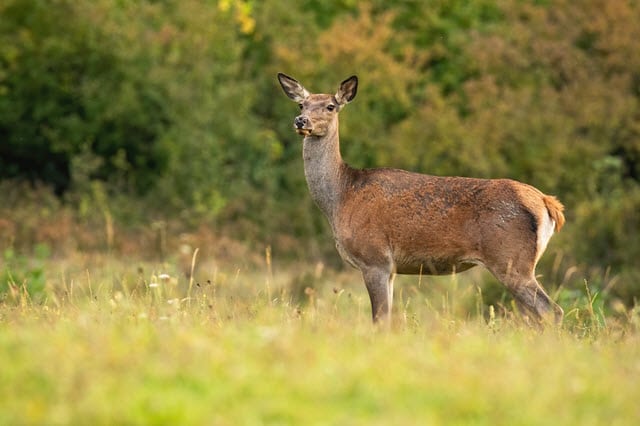
Female Red Deer Characteristics
Red deer is considered the largest deer species in the UK. Adult females can weigh up to 370 pounds and may grow up to four feet at the shoulder.
Female Sika Deer Characteristics
The Sika Deer, also called spotted deer or Japanese deer, are forest dwellers. They are native to Japan and East Asia countries like Taiwan and China. Sika hinds weigh up to 100 pounds.
Why Some Female Cervids Are Called Cows
Females of large deer species, including the North American Elk (Wapiti), Moose, and even Caribou or Reindeer, are called cows.
This name often corresponds with deer species where the male is called a bull.
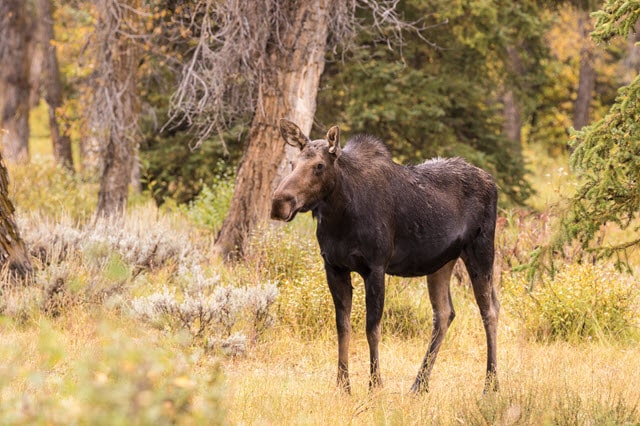
Female Elk Characteristics
The North American Elk is one of the largest deer species in the world. A female elk can weigh up to 600 pounds and reach up to 4 feet shoulder height.
The mane of a cow elk is typically shorter than the mane of an adult male elk.
Female Moose Characteristics
Moose are the largest and tallest species of deer. Hoof-to-shoulder height can reach five to 6 ½ feet while weight ranges between 500 and 800 pounds.
Female Caribou Characteristics
Mostly living in the northern parts of North America, the Caribou is the sole deer species where both bulls and cows have antlers. In other parts of the world Caribou are known as Reindeer.
The antlers of caribou cows typically grow straight, instead of branching or curving.
Frequently Asked Questions About Female Deer Names
You may still have some questions about female deer terms, so here are answers to some of the most common questions on the subject.
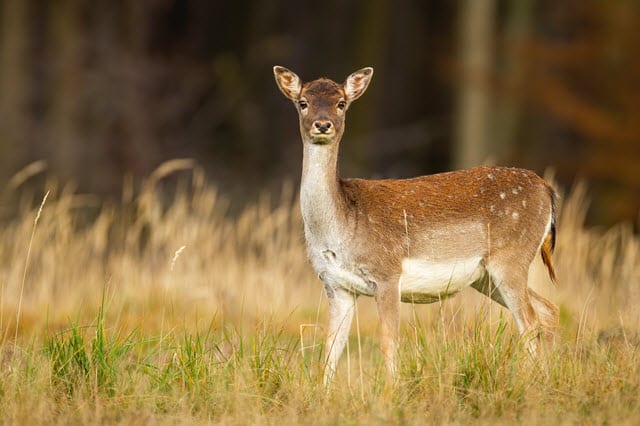
Can you use Doe, Hind, and Cow Interchangeably?
Small and medium-sized females are typically called does. Hind is the term for a mature Red Deer older than two years of age. Meanwhile, the term cow refers to the feminine gender of large species of deer.
While you may occasionally hear these terms used interchangeably, it’s inaccurate to do so.
Why do Some Female Deer Species Grow Antlers?
In most species of deer, the females don’t grow antlers, but there is one exception. The only species where both the male and female grow and shed antlers is the caribou or reindeer.
With that said, there are rare cases where does can grow antlers if they have high levels of testosterone.
Another reason why a doe may grow antlers is that it is either an actual hermaphrodite (both male and female reproductive organs) or a pseudo-hermaphrodite (has the external reproductive organ of a female but internal reproductive organs of a male).
What is a Harem of Female Deer?
Gathering a group of female deer or harem during the rut season is a mating strategy typically done by the Red Deer species.
Stags possessing a harem will be challenged by other stags through fights using their antlers if they want to mate with a female in the harem.
The dominant male will either keep possession if their harem or take possession from the other male.
How Often do Female Deer Give Birth?
The gestation period of deer ranges between 200 to 286 days, depending on the deer species.
Most species of deer give birth to one to three offspring each year. Female Mule Deer, however, give birth to one offspring on their first pregnancy. In succeeding pregnancies, they typically give birth to twins.

